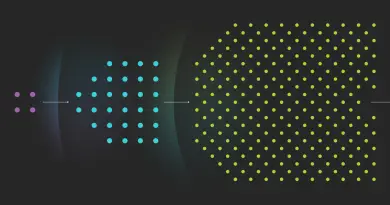How Blockchain Technology Is Influencing the Metaverse’s Future
The Metaverse, a term coined by science fiction author Neal Stephenson, refers to a virtual world where users can interact with each other and digital objects in real time. It is a concept that has captured the imagination of many, with some even predicting that the Metaverse will one day become a parallel universe where people spend a significant portion of their time. But what does the future of the Metaverse look like, and how is blockchain technology influencing its development?
What is Blockchain Technology?
Before exploring the impact of blockchain on the Metaverse, it is important to understand what blockchain technology is. Simply put, a blockchain is a decentralized and distributed ledger that records transactions on multiple computers, ensuring that the record is public and cannot be altered. This makes it a secure and transparent way to track the ownership and transfer of assets, whether they be physical or virtual.
Non-Fungible Tokens (NFTs)
Non-Fungible Tokens (NFTs) are digital assets that are unique and cannot be exchanged for other assets on a one-to-one basis. They are often used to represent items that are rare or have value, such as virtual real estate, virtual art, and virtual collectibles.
In the Metaverse, NFTs are used to represent virtual assets, such as virtual land, virtual buildings, and virtual objects. These assets can be bought, sold, and traded on marketplaces that use blockchain technology.
The use of blockchain technology in buying, selling, and trading NFTs ensures that the transactions are secure and transparent. When an NFT is bought or sold, the transaction is recorded on the blockchain, which provides a tamper-proof record of the transfer of ownership. This ensures that the ownership of NFTs is verifiable and cannot be disputed.
Decentralized Autonomous Organizations (DAOs)
Decentralized autonomous organizations (DAOs) are decentralized organizations that are run by smart contracts. Smart contracts are self-executing contracts with the terms of the agreement between buyer and seller being directly written into lines of code. DAOs are transparent and autonomous, meaning that they are run by the code of the smart contract and do not require a central authority to govern them.
In the Metaverse, DAOs can be used to govern virtual worlds and communities. For example, a virtual world might be run by a DAO that is responsible for managing the rules and regulations of the world, as well as collecting fees and distributing rewards to participants. This allows users to have a say in how the virtual world is run and governed, rather than having a central authority dictating the rules.
The use of smart contracts in running DAOs ensures that the rules and regulations of the DAO are followed and that transactions within the DAO are transparent and fair. Smart contracts also make it possible for DAOs to be self-sustaining, as they can automatically enforce rules and collect fees without the need for a central authority.
How Blockchain is Enabling Secure and Transparent Transactions in the Metaverse
One way that blockchain is enabling secure and transparent transactions in the Metaverse is by allowing users to track the ownership of virtual assets. In the Metaverse, these assets can include everything from virtual real estate and clothing to artwork and collectibles. By using blockchain to record the ownership of these assets, it becomes much easier to ensure that they are being bought and sold fairly and without any fraud or tampering.
Ensuring Fair Marketplaces in the Metaverse
One of the key benefits of using blockchain to track virtual asset ownership is that it allows for the creation of fair marketplaces in the Metaverse. With a transparent and secure record of ownership, it becomes much harder for bad actors to manipulate prices or engage in other deceptive practices. This can help to build trust among users and encourage more people to participate in the Metaverse economy.
Creating Unique Digital Assets with Blockchain
In addition to enabling secure and transparent transactions, blockchain technology is also being used to create unique digital assets in the Metaverse. Non-fungible tokens (NFTs) are a type of digital asset that are built on top of blockchain technology and are unique, one-of-a-kind items. NFTs have gained a lot of popularity in recent years, with everything from digital art and collectibles to virtual real estate being sold as NFTs.
The Rise of Digital Collectibles
The popularity of NFTs has led to the emergence of digital collectibles, which are unique digital items that are often bought and sold for high prices. This trend has been fueled in part by the increasing mainstream acceptance of cryptocurrency, as well as the growing popularity of the Metaverse. Digital collectibles offer a way for users to own unique virtual items that have real value, and their popularity is likely to continue as the Metaverse continues to grow and evolve.
Potential for Creativity and Collaboration in the Metaverse
The use of blockchain in the Metaverse also has the potential to facilitate creative partnerships and collaborations. Smart contracts, which are self-executing contracts with the terms of the agreement between buyer and seller being directly written into lines of code, can be used to facilitate these collaborations in a transparent and secure manner.
Conclusion
Overall, the potential for blockchain technology to influence the future of the Metaverse is vast. From enabling secure and transparent transactions to creating unique digital assets, blockchain has the potential to revolutionize the way we interact and engage in virtual worlds. As the technology continues to develop and the Metaverse evolves, it will be interesting to see how these two worlds continue to intersect and shape each other’s future.




